Skip to main content
- Funds
- Capabilities
- Insights
- About Us
Asset classes
Featured content
Fixed income

Low tide, sharp eyes: What to pick up
Fixed Income Managers Campe Goodman and Rob Burn share their outlook for credit in 2026 and discuss how investors can reposition for an environment where opportunities are harder to find.

Practical portfolio considerations for a new economic age
Solutions Director Andrew Sharp Paul explores practical portfolio considerations for a new economic age, focusing on quality equities, discerning bonds, and local APAC opportunities.

Rapid Fire Questions with Ross Dilkes
In this edition of “Rapid Fire Questions,” fixed income portfolio manager Ross Dilkes shares his views on the Asia credit market—covering the macro outlook, China’s momentum, the most compelling opportunities across the region, and key risks shaping the next 12 months.
URL References
Related Insights
Equity

The power of Asia’s dividends
Discover Asia’s quality dividend potential. With diverse income sources, structural tailwinds, and governance reforms at play, Asia offers a compelling mix of income, resilience, and long-term growth potential.

Low tide, sharp eyes: What to pick up
Fixed Income Managers Campe Goodman and Rob Burn share their outlook for credit in 2026 and discuss how investors can reposition for an environment where opportunities are harder to find.

Practical portfolio considerations for a new economic age
Solutions Director Andrew Sharp Paul explores practical portfolio considerations for a new economic age, focusing on quality equities, discerning bonds, and local APAC opportunities.
URL References
Related Insights
Wellington experts
URL References
Related Insights

The power of Asia’s dividends
Discover Asia’s quality dividend potential. With diverse income sources, structural tailwinds, and governance reforms at play, Asia offers a compelling mix of income, resilience, and long-term growth potential.

Low tide, sharp eyes: What to pick up
Fixed Income Managers Campe Goodman and Rob Burn share their outlook for credit in 2026 and discuss how investors can reposition for an environment where opportunities are harder to find.

Practical portfolio considerations for a new economic age
Solutions Director Andrew Sharp Paul explores practical portfolio considerations for a new economic age, focusing on quality equities, discerning bonds, and local APAC opportunities.

Rapid Fire Questions with Ross Dilkes
In this edition of “Rapid Fire Questions,” fixed income portfolio manager Ross Dilkes shares his views on the Asia credit market—covering the macro outlook, China’s momentum, the most compelling opportunities across the region, and key risks shaping the next 12 months.

Rapid Fire Questions with Philip Brooks on Asian equities
In this edition of “Rapid Fire Questions,” Philip Brooks, investment director and equity strategist, answers key questions on Asian equities—exploring the structural drivers of the asset class, the traits of quality businesses, and the most compelling quality dividend opportunities today.

Is all that glitters still gold?
Gold has delivered impressive gains thus far in 2025, but what does that say about market risks and the recent strong returns of stocks? Multi-Asset Strategist Nanette Abuhoff Jacobson offers her take on the precious metal and the case for diversification in today’s market.

Chart in Focus: Is the Fed rate cut positive for risk?
In this edition of Chart in Focus, we examine how the Fed’s long-awaited interest rate cut may influence risk assets.

Chart in Focus: What do higher long-end yields mean?
Long-end yields have climbed on concerns over structural growth and fiscal expansion. In this edition of Chart in Focus, we explore how shifting yield curves are reshaping opportunities across asset classes.

The long-term rewards of a contrarian approach to European equities
Portfolio Manager Tom Horsey and Investment Director Thomas Kramer explain why viewing European equities through a contrarian lens could help investors to uncover long-term opportunities in a rapidly evolving Europe.
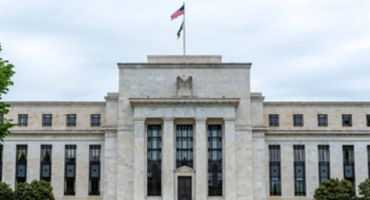
Chart in Focus: Fed rate cuts resume — What’s next for investors?
In this edition of Chart in Focus, we explore the Fed’s return to rate cuts after a strategic pause. We examine how this move, alongside diverging central banks paths, could shape the outlook for risk assets.

Rapid Fire Questions with Tim Manning
In this edition of “Rapid Fire Questions,” equity portfolio manager Tim Manning offers his views on rates, fiscal policy, tariffs, and AI — and shares why he remains constructive on the US equity market.

FOMC: Cushioning the US labor market
Fixed Income Portfolio Manager Jeremy Forster analyzes the Fed's decision to cut interest rates at the September FOMC meeting.

Evaluating human capital management amid AI adoption: A guide for investors
This guide explores the critical role of HCM in maximizing AI's potential benefits, from productivity to innovation. Wellington ESG analyst Caroline Conway also provides targeted engagement questions to ask management teams as they navigate their AI journey.

How a changing Europe is reshaping credit markets
Portfolio Managers Derek Hynes and Konstantin Leidman explore how a changing Europe is reshaping the region's credit markets and identify key takeaways for investors.

Chart in Focus: Are today’s equity returns too high?
In this edition of Chart in Focus, we examine the strength of markets so far this year, placing it in historical context.

Chart in Focus: Where are rates headed?
In this edition of Chart in Focus, we take a look at where rates have been headed and potential implications moving forward.

Chart in Focus: Earnings upgrades fueled the recent US equity market rally
Where are earnings heading? In this edition of Chart in Focus, we address the recent uptick in earnings expectations and its potential impact on equity returns.

Twilight zone: how to interpret today’s uncertain macro picture
Macro Strategist John Butler and Investment Director Marco Giordano explore how to interpret today’s uncertain macroeconomic picture and its key implications.

Chart in Focus: Are higher valuations justified?
Since Liberation Day, a clearer picture on tariffs has begun to emerge and markets have rallied in response. In this edition of Chart in Focus, we revisit cross-asset valuations and examine if the higher valuations are justified.

(Re)emerging markets: 10 reasons for optimism
Our experts identify 10 reasons why now may be the time for investors to reconsider emerging markets.

Chart in focus: What does a weak US dollar mean for global investors?
In this Chart in Focus, we illustrate how the power of the US dollar in 2025 stacks up against the past fifty-plus years. Learn what we're watching and understand the global investment implications of a weaker USD.

China’s changing: Why you should be watching
Macro Strategist Johnny Yu discusses structural shifts in China impacting global investment dynamics. notably diminished importance of the property sector and collapse of imports.

Chart in Focus: Is growth investing still dominating?
Growth isn't global? In this edition of Chart in Focus, we compare the performance of value vs. growth stocks globally, highlighting the contrast by region, and in turn explore the implications for style investing.

Rapid Fire Questions with Philip Brooks (Part 2)
In part 2 of his “Rapid Fire Questions”, equity strategist Philip Brooks shares his views on 3 key questions, focusing on the topic of Quality and investible opportunities today in US and abroad.

Rapid Fire Questions with Philip Brooks (Part 1)
In part 1 of his “Rapid Fire Questions”, equity strategist Philip Brooks shares his views on 3 key questions, focusing on market outlook and risks.

Facing a new economic reality
We summarize our 2025 mid-year outlooks.

Still opportunities in European equities? Positioning is key
Macro Strategist Nicolas Wylenzek revisits the case for European equities and discusses why positioning can help optimise exposure to Europe’s accelerating regime change.

Severance: The split between the economy and the markets
While markets have bounced back since Liberation Day, policy changes and macro data bear watching. Heading into the second half of 2025, we're focused on relative opportunities across asset classes created by disconnects and divides between markets and economies.

The power of positive and pragmatic thinking
While markets have a lot to worry about, from government policy to geopolitics, Global Investment and Multi-Asset Strategist Nanette Abuhoff Jacobson looks at the world from another angle: What could go right? She offers five reasons for positive thinking and considers the investment implications.

Beyond US exceptionalism: where now for equities?
It might feel like the narrative of US exceptionalism has only been questioned in recent months — particularly in the wake of Liberation Day — but we see Trump’s tariff announcements as the clearest signal yet of a shift that has already been underway for nearly a decade.

Two key questions that bond investors should not ignore
Investment Directors Amar Reganti and Marco Giordano and Portfolio Manager Campe Goodman tackle two key questions that are likely to be top of bond investors’ minds during the second half of 2025.

Could the global policy response misfire?
In their mid-year macro outlook, Macro Strategists John Butler and Eoin O’ Callaghan discuss how the global policy response to the trade shock could misfire, with major implications for investors.
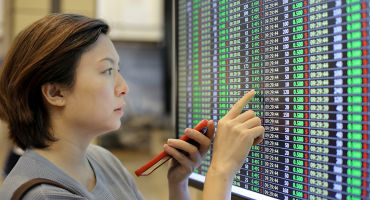
Chart in Focus: Did you miss out on the market bounce back in April?
Did you miss out on the market bounce back in April? In this edition of Chart in Focus, we look at market turnaround following the Liberation Day correction, highlighting the consequences of not having stayed invested.

InvestorExchange: Tariffs, Treasuries, and taxes — What comes next?
Fixed income portfolio manager Connor Fitzgerald joins host Amar Reganti to discuss the potential effects of tariffs and other fiscal decisions on the bond market.

InvestorExchange: Credit investing amid today's volatility
Host Amar Reganti talks to Campe Goodman about what's next for bond markets and how investors may be able to navigate today's volatility.

Rapid Fire Questions with Campe Goodman
In this edition of “Rapid Fire Questions”, fixed income portfolio manager Campe Goodman shares his views on 4 key questions in this Q&A session.

Why the US dollar’s “crooked smile” could upend asset allocation
Brij Khurana explores the dollar smile theory's impact on asset allocation and foreign investors' strategies amid currency fluctuations.

The yen smile: New economic era upends traditional safe-haven currency relationships
Portfolio Manager Sam Hogg discusses the US Dollar Smile Theory and the Japanese yen's safe-haven status in the context of global trade and monetary policy changes.

Europe: a good hunting ground for high yield?
With attractive yields and a low duration profile, high yield can present potentially compelling opportunities for investors, despite the continued volatility.

Credit: the power of flexibility in an uncertain world
Uncertainty in credit markets can create opportunities for investors, provided allocations are flexible enough to benefit. But how can investors balance flexibility with discipline?

Making the most of the new economic era’s bright spots
Despite uncertainty, there are important factors supporting a more optimistic approach. By focusing on structural trends and considering a wide range of views, investors can position portfolios for positive long-term returns.
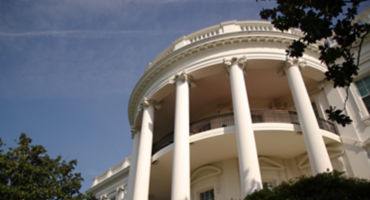
Four investment perspectives on Trump’s first 100 days
Four of our experts across fixed income and equity share their asset-class level insights on the first 100 days of the current Trump administration and analyze the implications for investors.

Chart in Focus: Patience is power — stay invested through volatility
What does a higher VIX mean? In this edition of Chart in Focus, we explore the historic performance of the global equity market after large bouts of volatility, and the investment implications for equity and fixed income investors amid the US tariff turmoil.

Fiscal versus tariffs: what wins out for Europe?
Just as investors were starting to explore the potential for growth in Europe, Trump’s tariffs landed. To what extent is the case for Europe still intact?

Flexibility with focus: how to position fixed income for volatility
Portfolio Manager Martin Harvey and Investment Director Marco Giordano explore how a focused use of flexibility can help position fixed income portfolios for volatility.

How China can offset the tariff shock
Macro Strategist Johnny Yu details the approaches Beijing could take to offset the tariff shock, from fiscal strategies to potential retaliatory measures to concessions that Washington may welcome.

There is more than one way to approach growth equities
Portfolio Managers Steven Angeli and Joe Chung, and Investment Specialist Casey Vale discuss how looking at growth equities in a different way may help uncover opportunities amid heightened uncertainty and volatility.
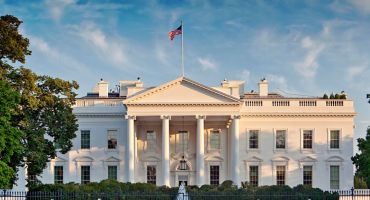
Early thoughts on historic hike in US tariffs
Macro Strategist Michael Medeiros explores the significant economic and market implications of the latest US tariffs, highlighting potential recession and inflation spikes, and the impact on global trade relations.

Sacrificing stocks on the altar of trade
Brij Khurana discusses the Trump administration's new stance on trade and its impact on the US economy, global markets and asset prices.

What do tariffs mean for portfolios?
Tariffs exceeded market expectations. Now what? Expect short-term volatility, identify concentrations and consider using sell-offs as an entry point to diversify across regions and styles, says Nanette Abuhoff Jacobson, Global Investment and Multi-Asset Strategist.

Could “Liberation Day” trigger a shift in capital flows?
John Butler discusses groundbreaking US tariffs, their impact on capital flows, and the changing investor perception of the US and Europe.

Oh baby, baby, it’s a wild world
Just one quarter into the year, many policy and economic assumptions have been turned on their head. What does it all mean for equity, bond, and commodity markets around the world? Members of our Investment Strategy & Solutions Group offer their outlook.

How stewardship can bring perspective amid uncertainty
Portfolio Managers Yolanda Courtines, Sam Cox, Investment Director Alex Davis and Investment Specialist Fred Owens-Powell examine how a stewardship perspective can help equity investors uncover opportunity amid uncertainty.

Finding fixed income opportunity in unprecedented times
Brian Garvey and Brij Khurana highlight the importance of diversified fixed income portfolios in managing volatility and seizing opportunities amid economic uncertainty.

Allocating to fixed income in an age of austerity
Amar Reganti and Adam Norman explore how flexible fixed income strategies may offer stability and yield in a volatile market environment.

The power of local perspective: the rewards of a contrarian approach to European equities
Portfolio Manager Tom Horsey and Investment Director Thomas Kramer explain why they see compelling opportunities in today's European equity market for contrarian, bottom-up investors.

Bitcoin on the brink: What investors need to know
As bitcoin appears to be entering a new phase of acceptance, we offer a brief asset owner's guide to the cryptocurrency's role, the evolving regulatory environment, potential investment benefits and risks, and portfolio implementation.

The yield buyer
Our fixed income experts examine the impact of tight credit spreads and elevated yields on today’s credit markets and explore the value of active management.

Monthly Market Review — February 2025
A monthly update on equity, fixed income, currency, and commodity markets.

High hopes and low credit spreads
Connor Fitzgerald highlights the implications of tight credit spreads and the importance of flexibility for fixed income managers navigating today's market.

FOMC meeting: Misery loves company
Fixed Income Portfolio Manager Jeremy Forster explores the Fed's decision to hold rates, downgraded economic forecasts, and the implications of balance-sheet policy changes on inflation and market conditions.

Chart in Focus: how sustainable is Europe’s rally?
Is the recent rally in European equities sustainable? In this edition of our Chart in Focus series, we explore the potential path ahead.

Chart in Focus: Can quality hedge against inflation?
Can Quality hedge against inflation? In this latest edition of Chart in Focus, we explore the historic outperformance of high-quality stocks and bonds during periods of high inflation, perhaps offering lessons should inflation surprise to the upside in 2025.
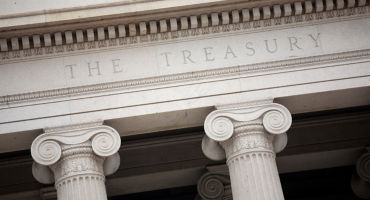
Turning tides for US Treasuries
Uncover the case for US Treasuries in fixed income portfolios against the current market backdrop.

Rapid fire questions with Tim Manning
In this edition of our "Rapid Fire Questions with Portfolio Managers" video series, Tim Manning shares his views on 3 key questions on US equity market outlook.

Accelerating the future of active management
CEO Jean Hynes explains how Wellington is building for the future of active management by investing in our capabilities and aligning our organization and talent with clients’ shifting needs.

Securitized credit: Opportunity amid tight corporate spreads?
Portfolio Managers Rob Burn and Cory Perry discuss why they believe securitized credit has an attractive role to play in today’s tight-spread environment and highlight potential areas of opportunity in 2025.

What's current in credit: November 2024
Connor Fitzgerald explores the impact of President Trump’s US election victory on credit markets. Where are the opportunities and risks for credit investors now?

Is your portfolio keeping pace with the changed outlook?
It's been an uncertain few years for investors, but looking ahead, we believe investors can expect a resilient economy, a solid outlook for growth and a positive environment for risk assets. What does a changed outlook mean for investors?

Chart in Focus: Is the “Trump trade” real?
Is this "Trump trade" real?In this latest edition of Chart in Focus, we compare market's reactions to Trump's re-election and his 2016 election, and share our observations.

Time for bond investors to take the wheel?
Volatility makes bond investing less straightforward, but it can also create opportunities, provided investors are in a position to "take the wheel" in order to capitalise on them.

Chart in Focus: Can this equity bull market last?
Can this current equity bull market last? In this latest edition of Chart in Focus, we focus on the indicators of whether it may come to an end or keep running.
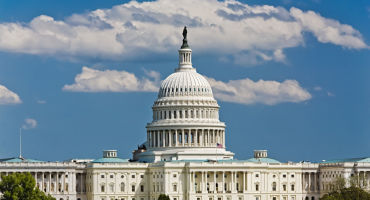
What does Trump's US election win mean for bond investors?
During the week of US election, Paul Skinner interviews Connor Fitzgerald, Fixed Income Portfolio Manager, on the market implications and his portfolio positioning following the presidential election results.
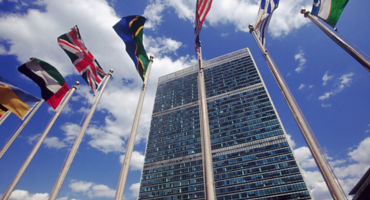
It’s different this time: Trump faces challenging geopolitical dynamics
Our expert explores how Trump may approach the heightened geopolitical challenges his second administration faces.

What do the US election results mean for investors?
The US election results could have significant implications for the global economy and capital markets. Our panel of experts provides a thorough analysis of what happened and explores potential market impacts.

Trump win likely to accelerate macro trends already in motion
The US election results could have significant implications for the global economy and markets. To help you understand these changes, US Macro Strategist Mike Medeiros provides a thorough analysis and discusses the potential market impacts.

Are bond investors ready for a US industrial revolution?
Portfolio Manager Connor Fitzgerald discusses why bond investors should ready themselves for a potential US industrial revolution and shares his perspective on how to reposition portfolios for such a scenario.

Quality growth — a less volatile sweet spot?
Growth stocks can be volatile, especially when companies fail to meet expectations. However, high-quality growth companies can help mitigate downside risk while still offering potential for long-term outperformance. How can investors find the sweet spot?

What's current in credit?
In this short video series, Fixed Income Portfolio Manager Connor Fitzgerald takes a look at what's current in credit. Given rather tight credit spread valuations, what is Connor's outlook for the next twelve months and where are the opportunities and risks now?

Chart in Focus: What does the rate cut mean for equities and bonds?
Are rate cuts positive? On the heels of the much-anticipated initial Fed cut, in this article we look to historic precedent for where the markets could go in the coming months.

An active investor’s guide to growth equities
Our experts offer their view on the current economic environment, explore best practices for investing in high-quality growth equities, and highlight where they see opportunity now.

Chart in Focus: The need to differentiate market growth from macro growth
Macro growth and earnings growth have been misaligned for the last 15 years, particularly in the US and China, but in opposite directions. For equity investors, what would be the key to identify real growth?
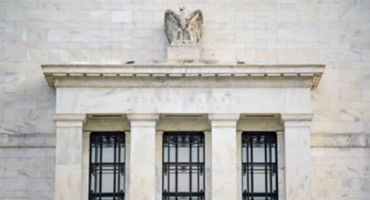
Rate relief: Fed cuts half point, but says “economy is strong”
Our expert explains the Fed's bold rate cut and some key takeaways for investors.

Capturing Quality Growth opportunities in US equities driven by "3D" forces
The U.S. stock market has regained focus due to the AI boom, and with the upcoming election this year, how can one position themselves to seize opportunities? We believe that the U.S. stock market will be driven by ‘3D’ market dynamics. Investors should consider strategies that carefully select high-potential businesses or quality companies to capture attractive opportunities. (Only available in Chinese)

Four investment perspectives amid a pivotal US election
How can investors reposition portfolios for a pivotal but highly unpredictable US elections? Nick Samouilhan explores potential avenues in conversation with three leading portfolio managers.

Japan’s tech sector: Time for a reboot?
Japan's semiconductor industry has revived global interest in Japan's tech ecosystem. But we believe the dynamism of Japan's tech sector today doesn't start and end with electronics and semiconductors.

Harris vs Trump: The foreign policy and investment implications
Our expert examines expected Harris and Trump foreign policies and their potential impact on the investment landscape.

Walking a mile in Fed Chair Powell’s shoes
A slow roll on rate cuts by the Fed could frustrate markets and lead to more volatility ahead of the September FOMC meeting. See our take on what to expect for the next few weeks.

Massive market sell-off: Justified or an overreaction?
What's behind the global market meltdown, and what should investors consider doing? Global Investment and Multi-Asset Strategist Nanette Abuhoff Jacobson shares her views.

Chart in Focus: Four key areas of opportunities in bonds amid Fed uncertainty
We discuss four key areas of opportunities in fixed income amid Fed uncertainty in the second half of the year.

Chart in Focus: Broadening earnings growth signals healthy US equity market
Over the past year, the markets have seen the companies best poised to harness and benefit from new innovations within artificial intelligence rewarded accordingly. Can this signal more upside for the entire US equity market?

Unlocking investment value in a 3D world
Co-Head of Multi-Asset Strategy Nick Samouilhan explains why focusing on the “three Ds” of divergence, dispersion and disruption could help to uncover investment opportunities while strengthening portfolio resilience.

Time for credit selection to shine
Fixed income investors continue to seek answers to an era of volatile rates. Large, static exposures to credit markets no longer cut it. Instead, a nimble and dynamic approach is more likely to create resilient and consistent total return outcomes.
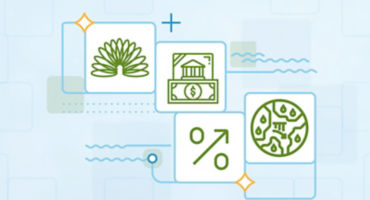
Capitalizing on rate shifts: Parsing opportunities in the second half
Fixed Income Portfolio Manager Campe Goodman and Fixed Income Strategist Amar Reganti discuss how to capitalize on potential rate shifts in the second half of the year

Reframing fixed income portfolios: why bond maths makes the difference
It is easy to understand why fixed income investors tend to focus on yields. But investors who focus too much on yield may run the risk of overpaying for income and underestimating the impact of price volatility.

Beyond the hype: finding AI’s long-term winners
Our expert argues that a long-term mindset based on deep research can help to uncover evolving AI investment opportunities amid the hype.

Looking beyond yield: Rethinking the approach of fixed income investing
Investors face a new regime, challenging traditional assumptions about returns and volatility. With central bank interventions impacting credit markets, it’s time to rethink income allocations. Rather than fixating solely on yield, consider a dynamic approach, presented by Connor Fitzgerald.

Exploring active opportunities amid continued regime change
Head of Multi-Asset Strategy, APAC, Nick Samouilhan outlines why today's environment of dispersion, divergence and disruption offers potentially compelling opportunities for active investors.

Income: the hard worker in your portfolio deserves more credit
Income from cash is good but income from bonds is better. In a less certain macro environment, Nick Samouilhan thinks the case for income only gets stronger. How can investors make the most of the opportunities?

Annual message from our CEO: At a crossroads
CEO Jean Hynes offers perspectives on the current macro and market environment, including the need to challenge long-held assumptions, prepare for persistent disruption, and consider the resulting investment opportunities and risks.
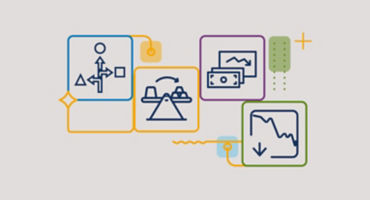
Three ways to elevate your portfolio in 2024
As a new investment era takes shape, where should investors focus their attention in 2024? For multi-asset strategist Nick Samouilhan, three areas are top of mind: higher yields, the importance of stock selection and how to position for structural change.

China’s economy: Poised to exceed expectations in 2023
With the bar set so low for China's economy, Macro Strategist Santiago Millan thinks it won't take much for an upside surprise in 2023.
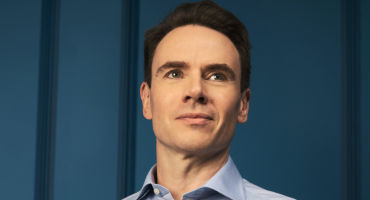
A theme is not an index
Portfolio Manager Dáire Dunne and Investment Director Andrew Sharp-Paul discuss the case for active thematic investing and highlight the importance of avoiding so-called "theme-washing."

The three hallmarks of an unconstrained bond fund
Portfolio Managers Brij Khurana and Brian Garvey and Investment Director Brian Doherty highlight three key characteristics that they believe every unconstrained bond strategy should incorporate.



URL References
Related Insights
10 reasons why China could be the next rerating story
Portfolio Manager Bo Meunier, Investment Director Irmak Surenkok and Investment Specialist Gilbert Chen set out 10 reasons why China could be the next rerating story to watch.
Multiple authors